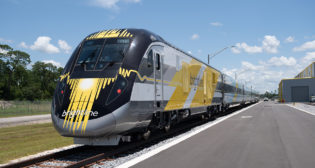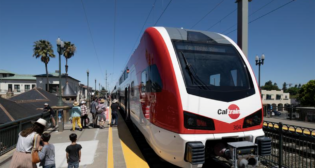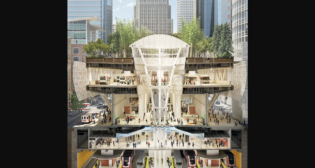
New cost estimate for California HSR
Written by Douglas John BowenThe California High-Speed Rail Authority Monday is expected to offer an updated estimate for construction and financing of a statewide high speed rail network. Cost estimates, which began at about $44 billion for 700 miles of right-of-way, had escalated to nearly $100 billion.
The latest plan, to be formally released at a train depot in Fresno, Calif., lowers the price to $68.4 billion, expands the initial segment, and accelerates construction schedules.
“We feel good that we’ve addressed a lot of the public concerns,” said CHSRA Chairman Dan Richard. “We feel this is a very, very reasonable and workable path forward for the state.”
Gov. Jerry Brown, a strong supporter of the HSR plan, will make the case for the project when he asks the Legislature in the coming weeks to appropriate $2.3 billion in rail bonds to begin constructing the first phase by year’s end. Brown ordered the board to rethink its previous proposal following polls showing that a majority of voters were reconsidering $9 billion in startup funding they voted to authorize for the network in 2008.
The updated plan includes much more incremental improvements, such as sharing track with existing passenger services. The first segment still is envisioned to be established in the Central Valley, linking the San Joaquin Valley and San Fernando Valley by 2022. Nearly $2 billion in upgrades would be made to existing regional passenger rail lines.
“Every step of the way, we will be connected to something and be able to improve service in the intermediate level while building out” a bigger system, Richard said of what’s being called a “blended system,” similar in some ways to operations on Amtrak’s Northeast Corridor (NEC), which serves eight states and the District of Columbia.
The new plan assumes an additional $4 billion from the federal government during the next 10 years, something less than assured given opposition to passenger rail in general, and HSR in particular, from large portions of Congress. The remaining costs would be covered from fares and private financing, with any shortfall bridged by tapping into California’s new industrial “cap-and-trade” program to reduce greenhouse gas emissions.



